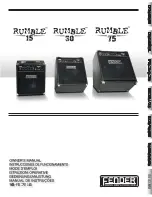
Copyright © 2018 AudioNote Kits
www.AudioNoteKits.com
Page 13
1.6.7 Hardware/Mechanical
Not all of us are mechanically oriented. So, the kit is well laid out such that all the hardware is provided
and bagged in individual sections, so things should make sense. Start thinking mechanically because
about a third of the kit is mechanical. The first thing to remember is that good hardware is beautiful: we
use all stainless steel metric hardware in the kits. It truly is a thing of beauty: don’t rush your
hardware! Here are a few helpful things to understand:
We use British metric hardware (M3, M4, M5, screw size 10mm, 15mm, etc..) as opposed to the
American imperial system (5/1000th or 50/1000th, 1 inch, 3/4 inch). Please familiarize yourself
with the hardware in the kit.
The screws will be called M3 or M4, which is the diameter of the shaft. The length of the shaft
will be in millimeters, so you will encounter things like an M4 screw 16mm, a PAN head screw
(which is a round spherical head), or a COUNTERSUNK or FLAT head screw (a screw head that
needs to be flush with a surface — for example, under a transformer). So if you are asked to use
an M3 16mm CSK screw, this is an M3 size (obviously), which is a thinner shaft diameter than an
M4; 16mm is the length of the shaft; and the head type is CSK, which is a countersunk or flat head
screw.
Once you have the screws mastered, look at the matching nuts such as M4 nut or M3 nut and
corresponding washers.
Standoffs are common in the kits (again, they are either M3 or M4 size, with different lengths).
They are typically threaded, so the screw goes into them.
If any of the hardware is confusing or something is not fitting right, please email us.
1.6.8 Wire Stripping and Tinning
When it comes to wires, we typically use 18 gauge (thicker) and 22 gauge in the kits. It's PTFE: Teflon
silver-plated copper wire. Basically this is classed as hook-up wire; we typically twist wire for you when
it needs to be. The other wire we use is called shielded cable, like an AN-A (Audio Note (UK)) for signals.
This is two-conductor wire: one is for the signal and the other (a big ground braid wrapped around the
signal wire) is the shielding, which helps prevent the cable from picking up noise. You should practice
stripping some 18g or 22g wire, and then try tinning this wire; this is the process of adding solder to the
bare wire so that the invisible coating on the wire is burned off. This makes for easy soldering to a PCB,
an RCA connector, or a transformer terminal. So it's a good idea to practice this a little before starting
the kit.














































